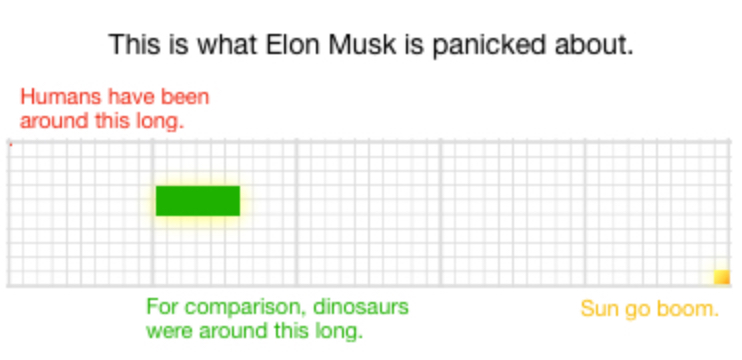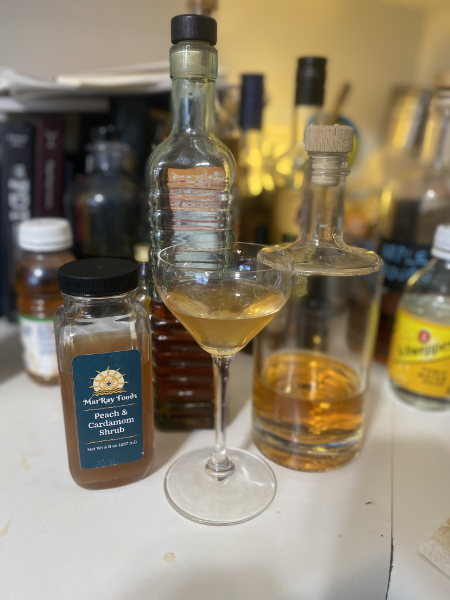Over on the Facebooks I have dedicated the last six months or so to exposing the stupidity, grifting, and overall malevolence and incompetence of the Republixanazi administration. I know it’s not pleasant, but if I can make a few thousand people aware of the issues we face, so be it.
Of course, I occasionally wonder how many of those people have muted or blocked me because OMG it’s relentless, and I’m pretty sure all the MAGAts fled long ago.
Except for one.
This person is not stupid and is fairly well read, but their head is so far up MAGA’s ass that they can hear a hamberder coming a small intestine away. They were regularly chiming in on my posts, spouting the most baseless crap ever, just the usual MAGAt shibboleths and bUt BiDens and Whataboutisms. After a week or so of this, I simply challenged them to put up or shut up: Names, dates, headlines. Give us facts, yo, not just snide MAGAt “comebacks.”
(Yes, I am using the singular ‘they’ to halfway shield their identity, which will enrage them even more when they eventually come across this post.)
You will be astonished to learn, I’m sure, that they have failed to provide any actual documentation of anything they’re sure is true. Not once. I even started tagging them to goad them into reacting, but no — they don’t got the goods. In the last week or so, they haven’t even made the effort to snark, because they know they don’t got the goods. I wondered if they had unfriended me, and I checked; no, we’re still ‘friends,’ so I decided to check out their page. Maybe, just maybe, they weren’t snarking because they were having an existential crisis discovering that their God Emperor was, shall we say, flawed?
Alas, no.
First, a metaphor: the Wax House.
If you build your house out of wax, because, hey, it’s beautiful with all the golden sunlight illuminating your walls and everything, you’ve committed yourself to a lot of work to keep it that way. That same sunlight might melt your home, or a casual tree branch or rock could crack your foundation.
So you add another layer two of wax. You build a wall around it. You construct a large dome of wax over it for extra protection, but that just creates more work, doesn’t it? But you keep at it, adding more and more layers to your protection, until the house no longer receives that golden light but you have to protect your Wax House, and on it goes.
Hold that thought. Here’s what I found on this person’s feed.

Oh my. Right off the bat, accusing “the left” with the right’s prime shibboleth “Ooh, look at the tolerant left.” This is exactly their position, that free speech means that they should be able to spout the most repulsive racist, classist, ablist, keep adding the -ist’s, crap imaginable, and if we point out they’re being dicks they scream YOU’RE THREATENING MY RIGHT TO FREE SPEECH.

::snork:: Good old Maggie. You could always count on her for a viperish, peevish lie. (See here.)
This one almost made me break my cover and comment with:

Something about Democrats always having to fix Republican economics, and that over 25% of our current debt is due to Turmp’s insane tax cuts for the rich. And he wants to increase them.
So let’s revisit our Wax House metaphor. Our friend has built a wax house of right-wing beliefs, and they are forced to contort themselves into gigantic pretzels to protect that wax house from anything that doesn’t make the wax house happy. This is a “closed belief system,” in which people cocoon themselves in whatever makes them feel… important? better than? and then shut the door, ignoring the actual real world of sociology, science, economics, whatever — because even the tiniest sliver of reality is enough to start melting that house.
Let’s see some of the other things that this person clings to:

I love this one. It encapsulates the MAGAts determined deflection away from any cracks in the wax. The country isn’t “squealing,” of course, we’re screaming at the destruction of our government by right-wing psychopaths: agencies, grants, support, departments, research, history — all gone. Our screaming is not what is destroying our democracy. (Our guest MAGAt of course cannot keep from ejaculating that aMeRiCa iS nOt A dEmOcRaCy KENNETH, one of their top ten shibboleths.)
Also: See the poor signs of UNITY and CIVILITY strewn among the wreckage? That’s an insidious weapon the MAGAts use whenever we start attacking them: they clutch their pearls and whimper about CiViLiTy! KENNETH. It’s as if they’re kicking the rest of us and if we object they start whining that they hurt their toe and cAn’T wE aLL gEt AlOnG KENNETH HENNGH?

These are fun. Rhetorically, this is known as a Gish Gallop, the right’s preferred strategy for talking at anyone who disagrees with them: You simply yammer on and on, flooding the air with one specious argument after another so that when you’re done, your respondent has very little way to respond, since 1) you’ve thrown too many topics into the conversation, and 2) for each of those topics, they have to deconstruct your lies and fallacies before they can even begin to address the actual topic.
But we’re not having to do this with a yammering MAGAt in the room, so let’s deconstruct this.
1. baby
Dear MAGAts: It’s an embryo, not a baby. A baby is a human you can hold in your arms and love. An embyro is something different. bUt ThE hEaRtBeAt KENNETH — let’s kill this shibboleth right off: THERE IS NO HEARTBEAT. There is an electrical signal from a clump of cells that will become a heart, but they are not a heart. bUt YoU cAn HeAr iT oN tHe uLtRaSoUnD KENNETH — no, you can’t. You can hear the synthesizer sound medical engineers have decided to add to those electrical impulses, because it’s a lovely sound, isn’t it — BUT IT ISN’T A HEARTBEAT.
Maybe this helps:

2. how much money you should earn
LOL wut? I’m not sure what this one is. Probably something to do with taxes, which drive the MAGAts insane. How dare they be required to contribute to the welfare of our nation and — quelle horreur! — OTHER PEOPLE KENNETH! Or it may be about that outrageously generous minimum wage of $7.25/hour that hasn’t been raised since 2009, 16 years ago. Thankfully, costs have not risen in the least in those 16 years. [N.B.: The “minimum wage” is now officially below the U.S. poverty level. See also. And, MAGAt friend, this is what I mean by names, dates, headlines. Evidence.]
3. what energy source you should use
This is their tired old “drill, baby, drill” shibboleth. All of Turmp’s bizarre whining about shower heads and toilet flushes and forest management and windmill cancer is part of this idiocy. Listen up, MAGAts, no one is telling you which “energy source” you must use, and the only reason anyone is telling you you should use renewable energy is just trying to keep you from perishing in an apocalyptic wasteland. But you do you.
4. what words you can say
Yeah, kind of like kindergarten: “Billy, you can’t use those words in class. Mrs. Jones, Billy absolutely cannot call Susie a shithead.” (See “free speech” above.)
5. what they can do to your kids without your permission
Like what, bubba? Is this the old “my kid went to school a boy and came home a girl” bullshit? Is it a sideswipe of any school activity that threatens to expose their kid to… oThEr PeOpLe KENNETH? Run away! Run away!
6. how you must refer to what a person wants to identify as
Syntactical fluidity is beyond the average MAGAt. Let’s translate that garble to “how you must respect another person’s identity,” because that’s what actually torques them. We call it politeness; they call it unpardonable coercion, fullscale communism if you wanna know, as if they knew that that meant.
7. who can own a gun
And then every MAGAts favorite hill to die on — because guns, get it? — the Second fupping Amendment. Do I think that people who need psych evaluations should have a gun? No. Do I think that abusive spouses should own a gun? No. Do I think anyone who has proven to be dangerous to themselves and others should own a gun or even have access to one? No. I’m not at all sure why our MAGAt friend thinks they should.
Having fun? One more and we’re done.

It has somehow become gospel that when Ron DeSantis illegally flew some undocumented immigrants and dumped them in Martha’s Vineyard (because take that, libtards, how do you like them apples har har), the very rich and liberal residents of the Vineyard clutched their pearls in horror at those, those filthy illegals </BlancheDuboisVoice> (because that’s MAGA’s reaction) and immediately “deported” them to Somewhere Else to dispose of them.
Only that’s not what happened. Yes, DeSantis did put these people on a plane, lying to them that they were being taken somewhere where they’d be assisted in getting settled, with job training, shelter, appropriate paperwork, etc. When they were delivered to the Vineyard, no one knew they were coming and it took a moment for everyone to respond. Which they did by… providing food, shelter, clothing, counseling, transportation to somewhere that actually had the resources to support these people, unlike the island of the Vineyard, and — wait for it — a fast-track to citizenship, since they were now victims of a crime, DeSantis.
For a fuller, and funnier, report, see Wonkette.
There was more our friend’s feed, and I had a hard time making myself look away from the wreckage of a mind like that, but Jebus H. Cthulhu, the appalling messiness of the thought processes, the whole closed belief system, was compelling, pathological even. But I got away safely, I think.
In summation, our MAGAt friend has put so many protective barriers around their wax house that they can no longer see the sun, but that’s okay because everyone knows that SoLaR pOwEr iS a HoAx KENNETH, HENNGH?
Thank you for coming to my TED Talk.
 I’ve been under the weather for the past week and a half, just pitifully unable to rise to any occasion. The only productive thing I’ve been able to handle is 1) going back through all my
I’ve been under the weather for the past week and a half, just pitifully unable to rise to any occasion. The only productive thing I’ve been able to handle is 1) going back through all my 









